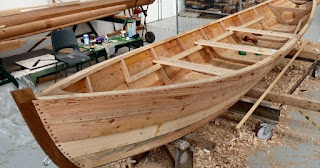Download Free DIY Boat Plans for Beginners Wanting to Build Fast
The allure of building your own boat is undeniable. The satisfaction of crafting a vessel from raw materials, the potential cost savings, and the unique customization options all contribute to its enduring appeal. However, the prospect can seem daunting, especially for beginners. This comprehensive guide aims to demystify the process by exploring readily available free DIY boat plans, focusing on designs suitable for novice builders and prioritizing efficient construction methods for faster completion.
Understanding the Importance of Selecting Appropriate Plans
Before embarking on any boatbuilding project, meticulous plan selection is paramount. Choosing the right plans significantly impacts the project's success, timeline, and overall enjoyment. Inexperienced builders should prioritize plans that feature:
Simple Construction Techniques
Simplicity is key for beginners. Avoid plans that involve intricate joinery, complex curves, or specialized tooling. Look for designs utilizing straightforward techniques such as butt joints, lap joints, or simple scarf joints. These are easier to master and require less specialized equipment.
Clear and Detailed Instructions
The plans should be easily understandable, even for a novice. Detailed diagrams, step-by-step instructions, and comprehensive material lists are crucial. Ambiguous instructions can lead to frustration, errors, and ultimately, project failure. Examine the plans carefully before committing – clarity is paramount.
Commonly Available Materials
Select plans that utilize readily accessible materials. This minimizes delays and reduces costs. Plans specifying exotic woods or hard-to-find components should be avoided by beginners. Opt for readily available lumber like plywood, pine, or fir.
Proven Designs
Choose plans for boat designs with a proven track record. Online forums and boatbuilding communities are valuable resources for gauging the success rate of specific plans. Look for designs that have been built successfully by many others, indicating their feasibility and reliability.
Appropriate Boat Size and Type
Beginners should start with smaller, simpler boat designs. A kayak, canoe, or small dinghy is ideal for a first project. Larger boats require more advanced skills, greater time commitment, and a higher level of precision. Starting small allows you to gain experience and confidence before tackling more ambitious projects.
Locating Free DIY Boat Plans Online
Numerous websites and online communities offer free DIY boat plans. However, it's crucial to carefully vet the source and assess the quality of the plans before downloading. Here are some tips:
Reputable Websites and Forums
Look for plans on established websites with positive user reviews. Boatbuilding forums can be invaluable resources. Experienced builders often share their experiences and recommend reliable plans. Reading comments and discussions can provide insights into the plan's clarity, difficulty, and overall success rate.
Assessing Plan Completeness
Before downloading, ensure the plans are complete. Check for all necessary diagrams, material lists, and step-by-step instructions. Incomplete or poorly documented plans can significantly hinder the building process.
Considering Different Boat Types
A wide range of free boat plans are available online, catering to various preferences and skill levels. Some popular choices for beginners include:
- Kayaks: Relatively simple designs, requiring minimal tooling and experience.
- Canoes: Slightly more complex than kayaks, but still manageable for beginners.
- Small Dinghies: Ideal for calm waters, offering a greater level of stability than kayaks or canoes.
- Rowboats: Provide a classic boating experience and can be relatively straightforward to build.
Essential Tools and Materials
Even the simplest boatbuilding project requires specific tools and materials. Familiarize yourself with these necessities before beginning your project. A well-stocked workshop will ensure a smoother and more efficient build process.
Essential Tools
- Measuring tapes and squares: Accurate measurements are critical for successful boatbuilding.
- Hand saws and jigsaws: For cutting lumber to size.
- Drills and screwdrivers: For assembling components.
- Clamps: To hold pieces together during assembly.
- Sandpaper and sanding block: For smoothing surfaces.
- Wood glue and sealant: To ensure watertight joints.
- Safety glasses and gloves: For personal protection.
Essential Materials
- Lumber: Select appropriate wood types based on the plans.
- Fasteners: Screws, nails, or bolts as specified in the plans.
- Marine-grade epoxy or varnish: For waterproofing and protection.
- Fiberglass cloth and resin (optional): For added strength and durability.
Tips for Faster Construction
While building a boat takes time and dedication, certain strategies can accelerate the process. Efficient planning and execution are key to faster completion.
Organize Your Workspace
A well-organized workspace maximizes efficiency. Keep all materials and tools within easy reach to minimize wasted time searching.
Pre-cut Materials
Where possible, pre-cut lumber to size before assembly. This speeds up the construction phase significantly.
Utilize Templates
Creating templates for repetitive cuts ensures accuracy and consistency, saving time and effort.
Work in Stages
Break down the project into manageable stages. This allows for better tracking of progress and prevents feeling overwhelmed.
Seek Assistance When Needed
Don't hesitate to seek help from experienced boatbuilders or online forums if you encounter difficulties.
Building your own boat is a rewarding experience. By carefully selecting appropriate plans, gathering the necessary tools and materials, and employing efficient building techniques, even beginners can successfully construct a functional and enjoyable watercraft. Remember to prioritize safety and take your time – the final product will be a testament to your effort and skill.




0 comments:
Post a Comment